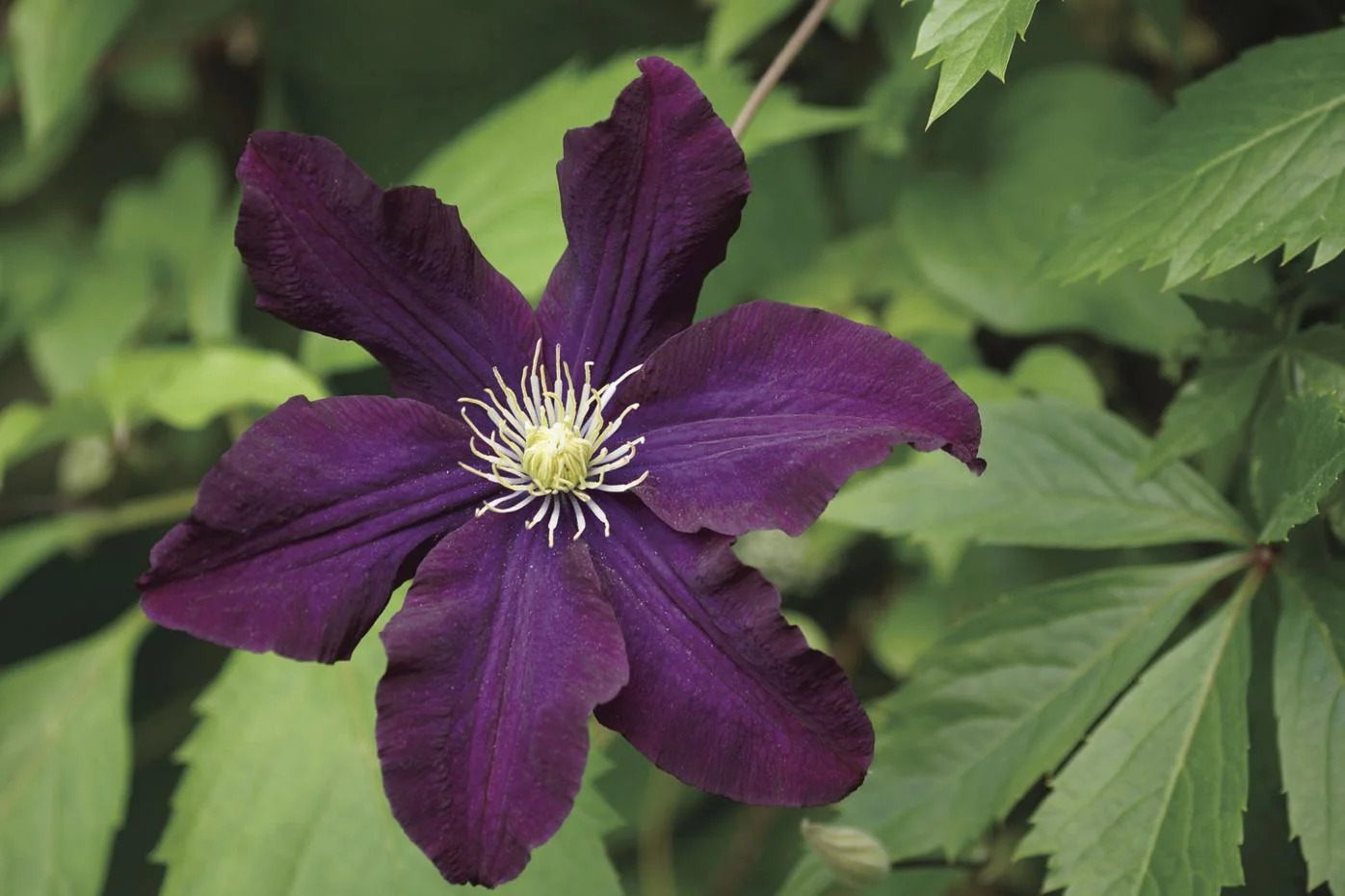
The world of plants is filled with fascinating species, each with its own unique characteristics and beauty. One plant that never fails to captivate gardeners and flower enthusiasts is the clematis. With its stunning blooms and diverse varieties, clematis is a popular choice for adding color and charm to gardens and landscapes.
In this article, we will delve into the world of clematis and uncover 15 intriguing facts about this enchanting plant. From its origins and symbolism to its care and cultivation, there is much to discover about this beloved flowering vine.
Whether you are a seasoned gardener or just starting your journey into the world of plants, these facts will not only enhance your knowledge but will also deepen your appreciation for the beauty that clematis brings to our gardens.
Key Takeaways:
- Clematis, a climbing plant, offers over 300 species with diverse colors and shapes, making it a stunning choice for vertical gardens and adding visual interest to any landscape.
- Plant Clematis in early spring or autumn, provide well-draining soil, and regular watering. It attracts butterflies and bees, symbolizing creativity and mental beauty.
The Clematis plant belongs to the buttercup family.
Clematis, scientifically known as Clematis, is a genus of flowering plants that belongs to the buttercup family, Ranunculaceae.
There are over 300 different species of Clematis.
With over 300 species, Clematis offers a wide variety of beautiful flowers, ranging in colors from vibrant purples and blues to soft pinks and whites.
Clematis is native to many parts of the world.
Clematis can be found across various continents, including Europe, North America, and Asia. Each region has its own unique species and cultivars.
The name “Clematis” comes from the Greek word for “climbing plant”.
The name Clematis is derived from the Greek word “klématis,” which means climbing plant. This is a fitting name, as many Clematis species are known for their climbing and scrambling habit.
Some Clematis varieties can reach impressive heights.
Certain Clematis cultivars, such as Clematis armandii, can grow up to 30 feet in height, making them excellent choices for covering fences, trellises, and walls.
Clematis flowers come in various shapes and sizes.
From large and showy blossoms to delicate bell-shaped flowers, Clematis offers a diverse range of flower shapes and sizes, adding visual interest to any garden.
Clematis blooms in a wide range of colors.
Whether you prefer the deep purple hues of Clematis ‘Jackmanii’ or the soft pink tones of Clematis ‘Nelly Moser,’ you can find a Clematis variety to suit your color preferences.
Clematis is a popular choice for vertical gardening.
Due to their climbing nature, Clematis plants are often used to create vertical gardens, adding a stunning vertical element to any landscape or garden design.
The best time to plant Clematis is in early spring or autumn.
For optimal growth and establishment, it is recommended to plant Clematis in early spring or autumn. This allows the plants to establish a strong root system before the heat of summer or the harshness of winter.
Clematis requires well-draining soil and regular watering.
Clematis plants thrive in well-draining soil that is rich in organic matter. Regular watering is essential to keep the soil evenly moist, but be careful not to overwater, as excessive moisture can cause root rot.
Clematis can be propagated through cuttings or layering.
If you want to expand your Clematis collection, you can propagate new plants through stem cuttings or layering. Both methods are effective in producing new plants with the same characteristics as the parent plant.
Clematis can attract butterflies and bees to your garden.
The nectar-rich flowers of Clematis are attractive to butterflies and bees, making them valuable additions to pollinator-friendly gardens.
Clematis can be grown in containers.
If you have limited space or want to enjoy Clematis on a patio or balcony, you can grow certain compact varieties in containers. Make sure to choose a large enough pot and provide adequate support for the plant to climb.
Clematis vines benefit from regular pruning.
To maintain healthy growth and abundant blooms, it is recommended to prune Clematis vines. Different pruning techniques are employed depending on the specific Clematis group to which the plant belongs.
Clematis is a symbol of creativity and mental beauty.
In the language of flowers, Clematis represents creativity and mental beauty. Its elegant flowers and climbing nature are associated with imagination and artistic expression.
These 15 intriguing facts about Clematis showcase the diversity and beauty of this beloved flowering plant. Whether you are an avid gardener or simply appreciate the allure of nature, Clematis is sure to captivate with its stunning blooms and climbing ability. Add a touch of beauty to your garden with the wide variety of Clematis species and cultivars available.
Conclusion
In conclusion, Clematis is a truly fascinating and diverse plant. Its beauty, versatility, and intriguing characteristics make it a popular choice for gardeners and plant enthusiasts alike. From its wide range of vibrant colors to its ability to climb and add vertical interest to any garden, Clematis is a versatile and stunning addition to any landscape.Whether you’re a gardening enthusiast looking to add some flair to your backyard or a nature lover interested in learning more about this enchanting plant, exploring the world of Clematis will surely captivate your senses. With its captivating blooms, unique growth habits, and impressive adaptability, Clematis is indeed a botanical wonder worth exploring and appreciating.So, go ahead and indulge in the world of Clematis. Discover the multitude of varieties available, experiment with different growing techniques, and embrace the beauty and intrigue that this exceptional plant offers.
FAQs
1. How do I care for a Clematis plant?
Clematis plants require well-drained soil, ample sunlight, and regular watering. They benefit from a support structure such as a trellis or fence to climb on. Pruning is also essential to encourage healthy growth and abundant flowering.
2. Can Clematis plants be grown in pots?
Yes, Clematis plants can be grown in pots. It’s important to choose a large enough container, provide proper drainage, and use a well-balanced potting mix. Regular watering and fertilizing are crucial for potted Clematis plants.
3. Are Clematis plants invasive?
No, Clematis plants are not typically considered invasive. However, some varieties can be vigorous climbers, so it’s important to choose the right type for your space and provide appropriate support to prevent damage to other plants.
4. When is the best time to prune Clematis plants?
The best time to prune Clematis plants depends on the variety. Early-flowering varieties should be pruned immediately after flowering, while late-flowering varieties can be pruned in early spring. It’s important to research the specific pruning requirements for your variety.
5. Can I grow Clematis from seeds?
Yes, Clematis can be grown from seeds, but it can be a lengthy and challenging process. It’s recommended to purchase established plants or propagate them through stem cuttings or layering for more reliable results.
Was this page helpful?
Our commitment to delivering trustworthy and engaging content is at the heart of what we do. Each fact on our site is contributed by real users like you, bringing a wealth of diverse insights and information. To ensure the highest standards of accuracy and reliability, our dedicated editors meticulously review each submission. This process guarantees that the facts we share are not only fascinating but also credible. Trust in our commitment to quality and authenticity as you explore and learn with us.


